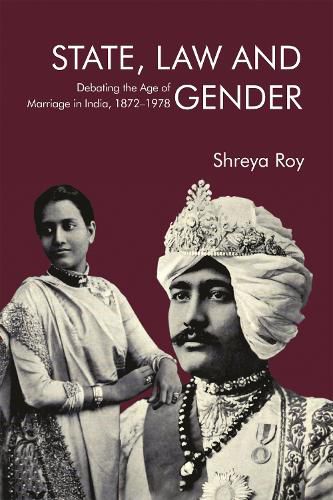Readings Newsletter
Become a Readings Member to make your shopping experience even easier.
Sign in or sign up for free!
You’re not far away from qualifying for FREE standard shipping within Australia
You’ve qualified for FREE standard shipping within Australia
The cart is loading…






A critical analysis of marriage law in India from the late nineteenth to early twentieth century
In State, Law and Gender, Shreya Roy highlights how Indian law has been implicated in women's subordination. It explores the ideological expectations that underpin women's legal regulation, as well as the traditions in which law subjugates women - the multifaceted and elusive ways wherein law validates profoundly gender-based suppositions, relationships, and characters. The book demonstrates that the correlation of moral precepts and legal norms is associated with the broader history of the age of marriage of girls in India, and it has also shown how history includes diverse alternatives to understanding and addressing the problem of child marriages that do not rely on liberal legal frameworks.
The book critically analyzes and evaluates the social and legislative history of the period focusing particularly on three significant pieces of legislation - Act III of 1872, the Age of Consent Act of 1891, and the Child Marriage Restraint Act of 1929. It traces the history of the legal changes related to the age of marriage in India after Independence, and links this issue with the present-day concern and the Government's initiative for raising the age of marriage of girls.
$9.00 standard shipping within Australia
FREE standard shipping within Australia for orders over $100.00
Express & International shipping calculated at checkout
A critical analysis of marriage law in India from the late nineteenth to early twentieth century
In State, Law and Gender, Shreya Roy highlights how Indian law has been implicated in women's subordination. It explores the ideological expectations that underpin women's legal regulation, as well as the traditions in which law subjugates women - the multifaceted and elusive ways wherein law validates profoundly gender-based suppositions, relationships, and characters. The book demonstrates that the correlation of moral precepts and legal norms is associated with the broader history of the age of marriage of girls in India, and it has also shown how history includes diverse alternatives to understanding and addressing the problem of child marriages that do not rely on liberal legal frameworks.
The book critically analyzes and evaluates the social and legislative history of the period focusing particularly on three significant pieces of legislation - Act III of 1872, the Age of Consent Act of 1891, and the Child Marriage Restraint Act of 1929. It traces the history of the legal changes related to the age of marriage in India after Independence, and links this issue with the present-day concern and the Government's initiative for raising the age of marriage of girls.